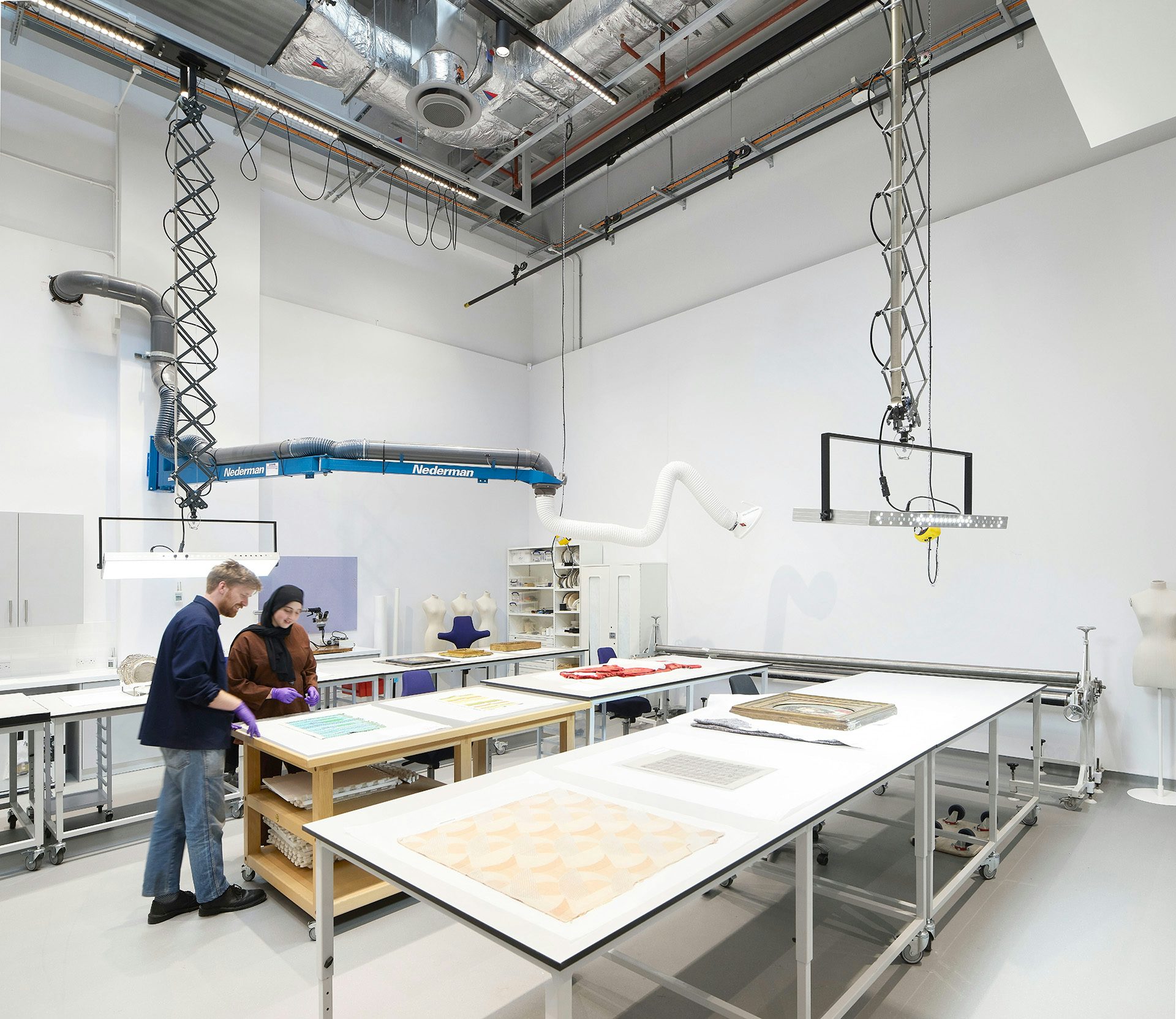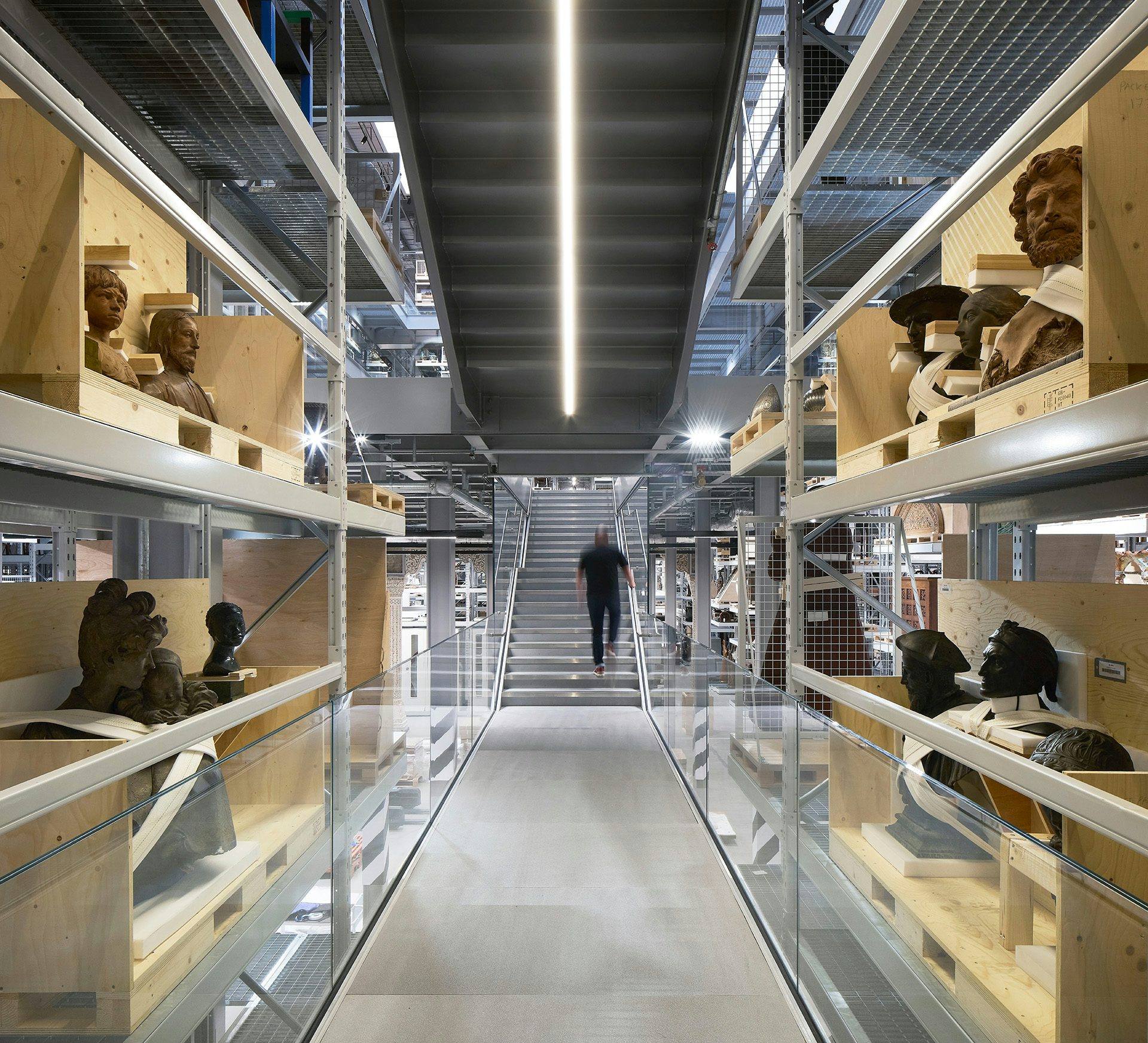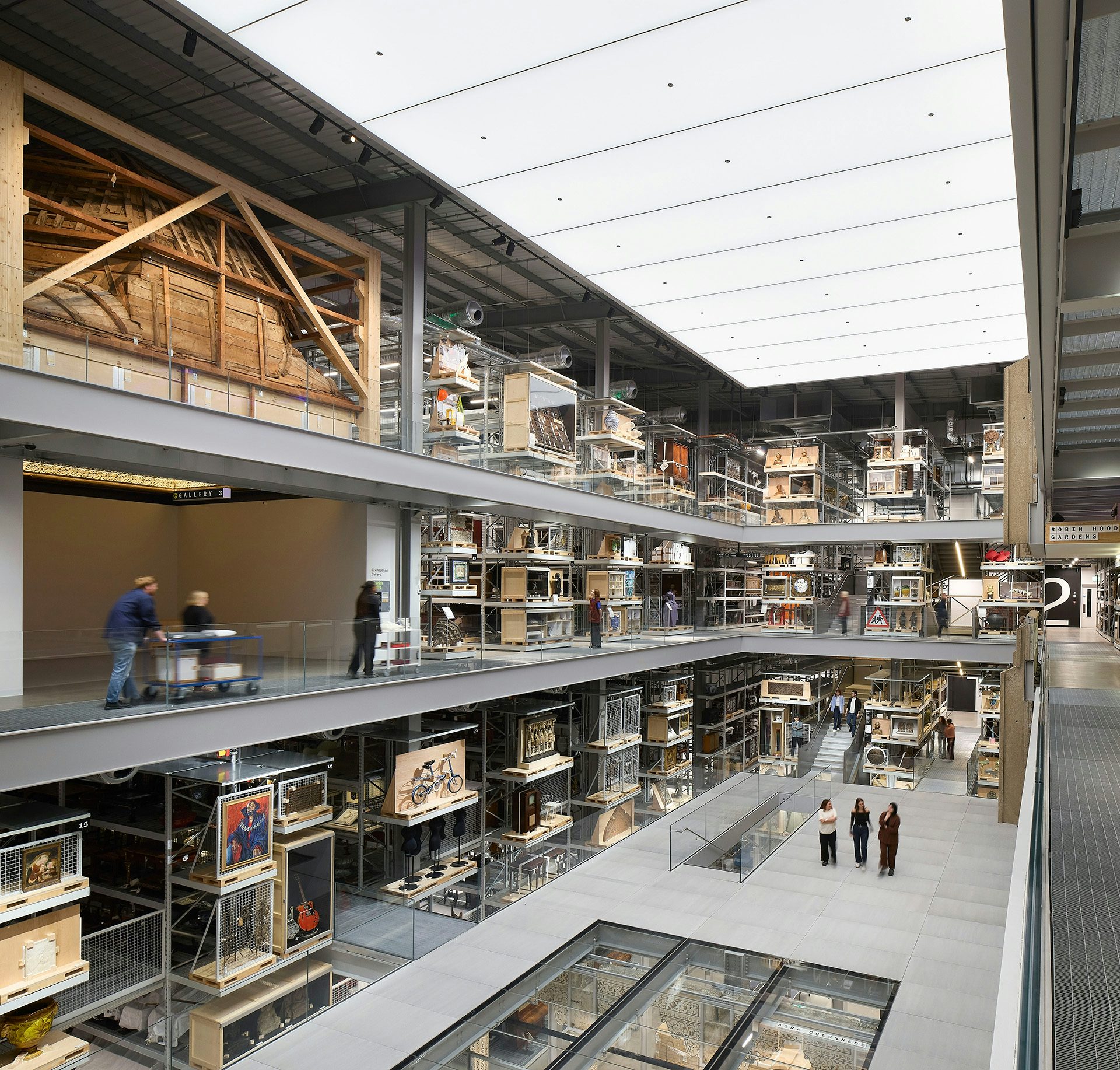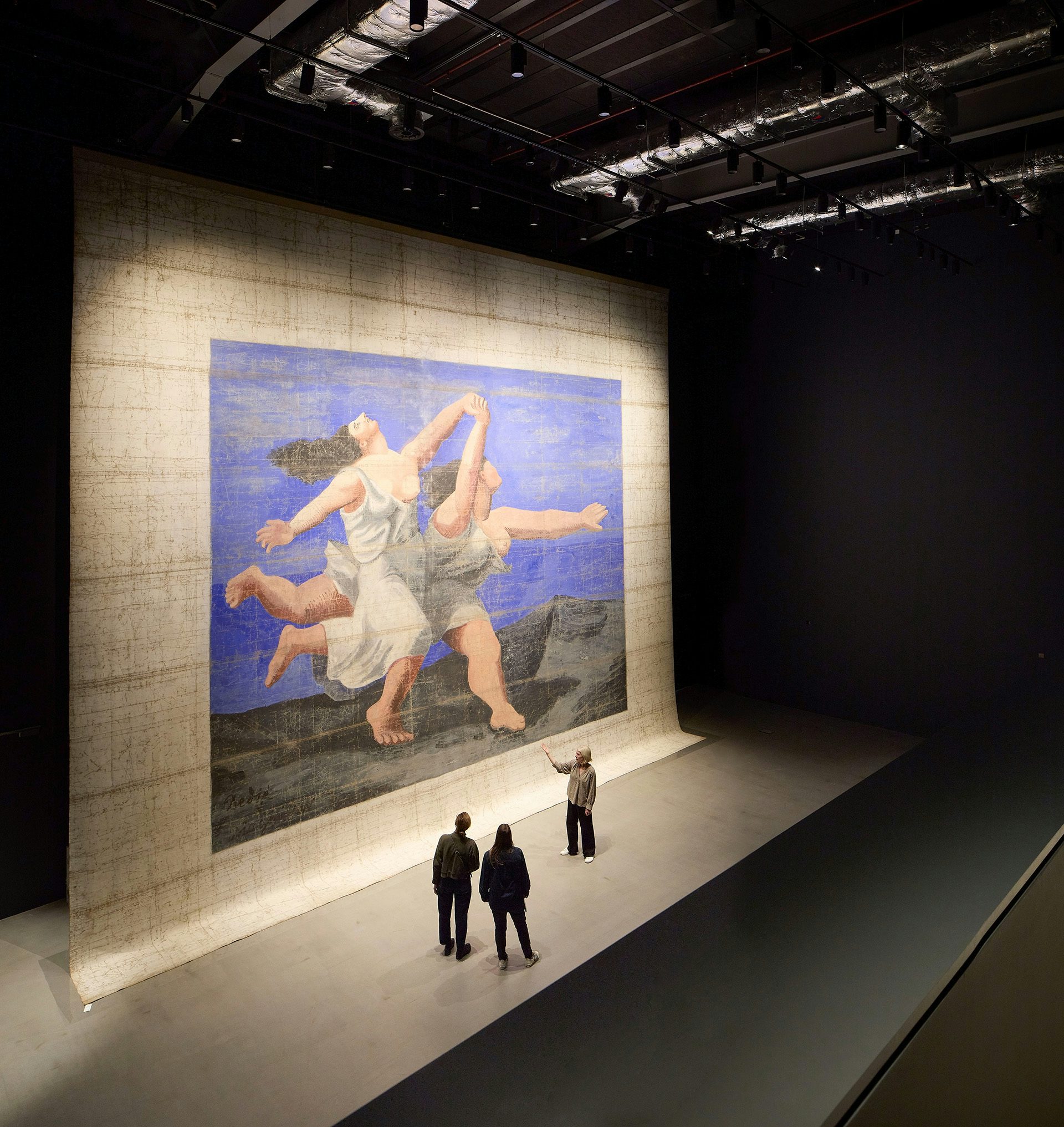Inside V&A East Storehouse’s spectacular mission
The museum’s new east London outpost allows visitors to get up close and personal with its enormous “collection of collections”. We explore the challenges and triumphs of its ambitions to redesign what an institution can be
In recent years, in an apparent bid to redress issues around access to the art world, museums and galleries have promised to reimagine institutional frameworks and curatorial methodologies, making lofty pledges about openness and democracy. Few seem to have launched into the challenge quite as fervently as the V&A, whose new Storehouse space is, like its mission, remarkable in scale.
Born from a need to rehouse its growing collection (previously stored in facilities elsewhere in London and Wiltshire), the V&A discovered an opportunity when conceiving of its new Storehouse in east London, converted from the old broadcasting centre used for the London 2012 Olympics. What if, besides serving a practical function as a working storage facility, it could invite people to experience the inner workings of an institution? This is why a substantial portion of its new 16,000 square-metre, multi-storey space, home to 250,000 objects, is now accessible to the public.
“The V&A’s collection is eclectic in the first place. Where else would you encounter suits of armour, stage cloths, biscuit tins, building fragments, puppets, thimbles, chandeliers, motorcycles, in one place next to each other?” says Elizabeth Diller, a partner at Diller, Scofidio + Renfro, the New York-based practice that led the redesign. “The collection is unusually eclectic, but also vast. It’s a collection of collections. And the prospect of organising the V&A’s storage raised the question: how do we celebrate the heterogeneity of the V&A’s collection as well as its vastness?

“So we decided to lean into the delirium of the strange taxonomies, the mediums, the wide variety of sizes, the myriad of material, the broad range of geographies and historical periods,” Diller says. Drawing on the idea of a cabinet of curiosities, the displays are designed to bring these contrasting collections and sources into dialogue, arranged “cheek to jowl, wall to wall, floor to ceiling”. It lives up to the precedent set by the brand campaign developed with adam&eveDDB last year, which promised: ‘If you’re into it, it’s in the V&A’.
Despite the number of artefacts on display, and having a curatorial team in charge of them, “it’s not a museum – it’s something else,” says Diller. Instead of splashy wall texts describing artists or movements, there are notes dotted around the themed ‘mini storage displays’ explaining certain curatorial choices and asking some questions of their own (for example, should degradable artefacts like photographs be packed away or displayed?). And rather than captions, each exhibit comes with a QR code directing people to a digital hub to learn more or order an object for future inspection. Some might see the lack of obvious descriptors as flattening or decontextualising art, but the team clearly believe it is a way to decentre the museum’s voice.

“Often we fall into this trap of saying, ‘the reason this thing is important is because’ and that is the story,” says V&A East chief curator Brendan Cormier, “but by radically opening up these collections, we can also radically open up the input and the interpretation of these spaces to find multiple meanings.”
“Rather than following a curatorial voice, which we typically do in galleries, reading the labels and understanding a story that’s meant to be told, here we have the opportunity … to follow our curiosity and our instincts and discover things,” echoes Diller, adding: “It’s not a one-way system. It’s really a two-way system where we give agency to the public.”

This is not without its risks. The scant use of glass display cases means that objects are very much touchable, from the busts that line the stairway guiding visitors into the cavernous yet bright main space – the Weston Collections Hall – through to the rows upon rows of artefacts displayed above, below and around it. In a standard museum, gallery invigilators can usually monitor visitor behaviour, but this seems difficult in the sinuous pathways, or ‘tributaries’, divided by tall storage units. When someone sneezed during a walking tour, it was a reminder of the unusual nature of the Storehouse’s proposition.
That’s not to say the display racks aren’t carefully considered, though. “People are coming in and out all the time. People are pulling out objects to do research, we’re doing our own research, we’re preparing displays, community groups are coming in to look at work that we’ve made with them,” says Cormier. “How can we come up with a display system that would properly reflect that in real time?” Designed with the help of design and architecture studio IDK, the modular display units allow objects to be retrieved and changed far more easily than usual. “That is a fundamental shift in museum practice, in which it typically takes lots of planning for very good reason to change displays over.”

While the Storehouse eschews museum design in most senses, there are several ambitious large-scale pieces that behave more like traditional installations or at least feel like focal points. A chunk of the now-demolished London estate Robin Hood Gardens hangs over the perimeter of the main hall, visible to onlookers down on the central floor. There is also a full-scale reconstruction of Frank Lloyd Wright’s Kaufmann Office, marking the architect’s only interior on show outside of the US. A Gothic-Islamic carved wooden ceiling from a 15th-century Spanish palace is also on show for the first time since the 1980s. On one floor, visitors can look up at the intricate ceiling carvings before going up a storey to see its rougher exterior on the deck above.
The double-storey experience of this particular installation is perhaps most indicative of the Storehouse space and the unconventional perspectives it is capable of. Diller describes it as an “inside-out building”. Unlike typical arts institutions where most access is given closer to the outer edges – nearest the front door – in the Storehouse, visitors arriving via the stairway land straight into its nucleus, where artefacts are most visible, before becoming increasingly restricted towards the edges of the building.

The various viewing platforms and mezzanines throughout the space produce an interesting tension. Visitors can look down at researchers and conservators working on lower levels in the new conservation studios, and thanks to livestreams, they can even interact with them. This kind of observation creates the sense of radical transparency, while at the same time feeling like spectating a performance. It will be interesting to learn whether in practice there will be any friction or disruption, or whether museum staff, visiting researchers, and the general public can co-exist harmoniously in a space like this.
It’s overwhelming taking in everything the building encompasses. There are also study spaces, a digital media library, and a substantial gallery currently displaying a ten-metre-tall stage cloth by Picasso, which can also be used as a performance space in the future. Besides the static displays, there is also a rolling programme of workshops, performances, residencies, and other live events.

But what’s most interesting about this entire endeavour is how the teams – the directors, architects, designers, curators and everyone else – have turned the fairly staid task of storage transferral into a philosophical take on some of the most pressing concerns in both the art world and the wider world around it.
Whether device storage limits and resource-hungry data centres or shrinking homes and overflowing landfills, we are constantly reminded as individuals to pay attention to what we are accumulating, consuming and storing. How does that bear on museum institutions?
“On average 3% of a museum’s collection is on display at any given time. The other 97% is hidden away in a basement or off site in a warehouse. And as museums accumulate more and more collection, the proportion of works on display is just going to diminish over time, unless we just build new wings to accommodate more stuff,” says Diller. She believes this is a fundamental “concern in our time”, but by “hybridising” – asking more of these spaces by using them for both storage and display – there is potential for a “paradigm shift”.
V&A East Storehouse opens on May 31; vam.ac.uk




